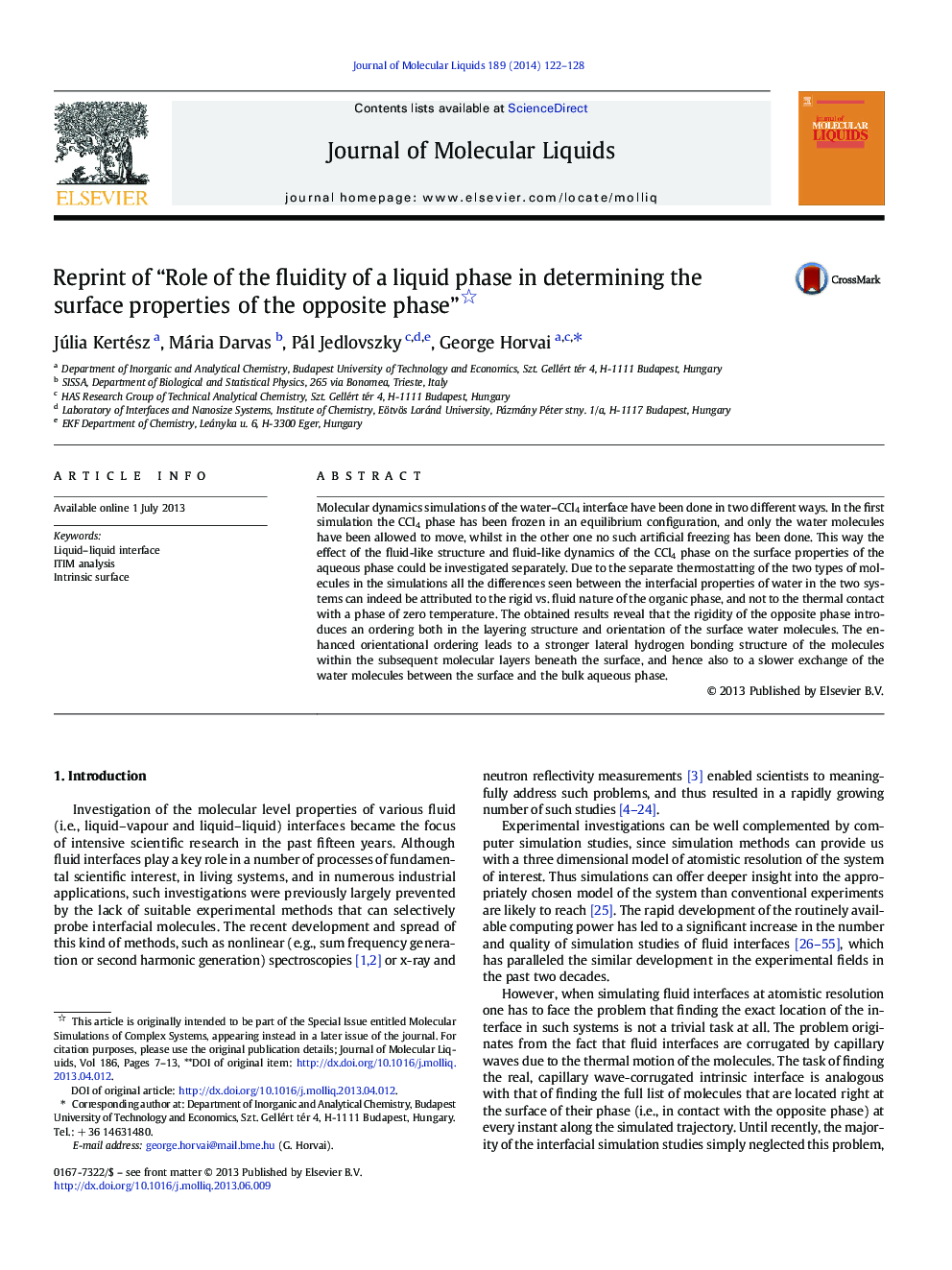| Article ID | Journal | Published Year | Pages | File Type |
|---|---|---|---|---|
| 5411803 | Journal of Molecular Liquids | 2014 | 7 Pages |
Abstract
Molecular dynamics simulations of the water-CCl4 interface have been done in two different ways. In the first simulation the CCl4 phase has been frozen in an equilibrium configuration, and only the water molecules have been allowed to move, whilst in the other one no such artificial freezing has been done. This way the effect of the fluid-like structure and fluid-like dynamics of the CCl4 phase on the surface properties of the aqueous phase could be investigated separately. Due to the separate thermostatting of the two types of molecules in the simulations all the differences seen between the interfacial properties of water in the two systems can indeed be attributed to the rigid vs. fluid nature of the organic phase, and not to the thermal contact with a phase of zero temperature. The obtained results reveal that the rigidity of the opposite phase introduces an ordering both in the layering structure and orientation of the surface water molecules. The enhanced orientational ordering leads to a stronger lateral hydrogen bonding structure of the molecules within the subsequent molecular layers beneath the surface, and hence also to a slower exchange of the water molecules between the surface and the bulk aqueous phase.
Keywords
Related Topics
Physical Sciences and Engineering
Chemistry
Physical and Theoretical Chemistry
Authors
Júlia Kertész, Mária Darvas, Pál Jedlovszky, George Horvai,
